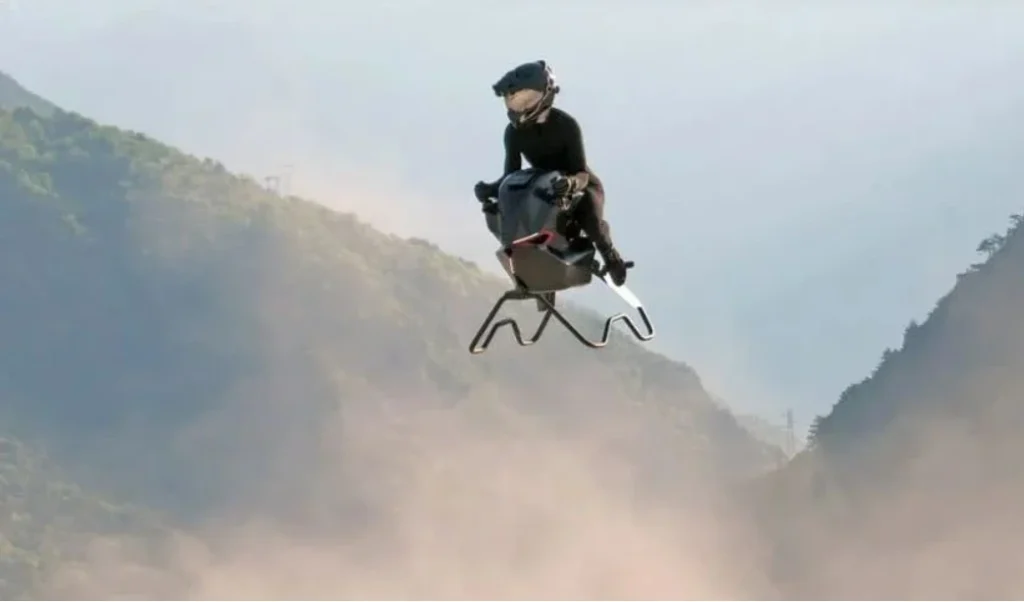In a time where cities are growing denser and daily commutes are becoming longer and more stressful, the need for innovative transport solutions has never been more urgent. Enter the Volonaut Airbike—a personal flying vehicle that could transform how we navigate urban spaces. Announced to great fanfare, this compact electric aircraft blends the aesthetics of a motorcycle with the vertical lift capabilities of a drone, positioning itself as a game-changer in the world of urban mobility.
Developed by Volonaut, a startup committed to redefining personal air travel, the Airbike is not just a futuristic concept—it’s a working prototype that’s already generating buzz in the tech and transportation industries. In this article, we’ll dive into what makes the Volonaut Airbike such a groundbreaking invention, explore its key features, and look at the broader implications for the future of travel.

What Is the Volonaut Airbike?
The Volonaut Airbike is an electric vertical takeoff and landing (eVTOL) vehicle designed for personal, short-range urban travel. It’s essentially a flying motorcycle—sleek, compact, and built for one passenger. The design takes cues from both aviation and motorsports, resulting in a machine that’s futuristic yet intuitive.
Unlike conventional helicopters or airplanes, the Airbike doesn’t require a runway. It lifts off vertically using multiple rotor systems, similar to a drone, and can hover, ascend, and land with remarkable precision. This makes it ideal for cities where space is limited and traffic is overwhelming. Early demonstrations have shown it navigating urban skylines with ease, offering a glimpse of a future where traffic jams could be a thing of the past.
The vehicle is built using lightweight materials like carbon fiber and aerospace-grade aluminum, allowing for a lighter body without compromising durability. It is powered by a state-of-the-art lithium-ion battery system, providing a balance between power and efficiency.

Features, Technology, and Performance
The Volonaut Airbike isn’t just visually impressive—it’s packed with innovative technology designed to make flying accessible, safe, and even enjoyable.
Autonomous Stability and Control
At the heart of the Airbike’s design is its automated stabilization system, which keeps the bike level and steady during flight. This system uses a combination of gyroscopic sensors, accelerometers, and AI algorithms to assist the pilot in maintaining balance and direction, significantly reducing the learning curve for first-time flyers.
Intuitive Pilot Interface
The cockpit is minimalist, featuring a touchscreen control panel with real-time diagnostics, navigation tools, and flight assistance options. The bike also features joystick-style handlebars, allowing riders to steer with simple, intuitive gestures. Think of it like riding a motorbike in the sky—but smarter.
Performance Specs
- Top Speed: 100 km/h (62 mph)
- Range: 30–35 km (18–22 miles) per charge
- Charge Time: Approximately 90 minutes using a high-voltage charging station
- Noise Level: Surprisingly quiet due to electric motors and noise-dampening propeller design
These specs make the Airbike ideal for short city-to-city hops or suburban commutes, especially in areas with heavy ground traffic.

Safety, Licensing, and Regulation
As with any new form of transportation—especially one that flies—safety and regulation are top priorities. Volonaut is working closely with aviation authorities to ensure that its aircraft meet or exceed modern aviation safety standards.
Pilot Certification
While you won’t need a full pilot’s license, Volonaut plans to implement a training and certification program that includes flight simulation, safety procedures, and a short supervised flight course. The goal is to ensure that anyone operating an Airbike is well-versed in its controls and emergency protocols.
Urban Airspace Management
To prevent mid-air congestion and ensure safe navigation, Volonaut is also part of several urban air mobility (UAM) initiatives aiming to develop “sky lanes” or designated flight paths within cities. The bike’s onboard GPS system will include dynamic routing that avoids restricted zones and crowded areas.
Safety Features
- Parachute deployment system for emergencies
- Collision-avoidance sensors using LIDAR and radar
- Automated landing protocols in case of system failure
These features are designed to make the Airbike not only futuristic but also practical and safe for daily use.

The Future of Personal Air Mobility
The Volonaut Airbike is more than a flashy gadget—it represents a significant step toward democratizing air travel. With urban populations growing and ground infrastructure struggling to keep pace, eVTOL vehicles offer a compelling alternative.
Industry analysts suggest that the personal air vehicle market could explode in the next decade, particularly as battery technology improves and regulations catch up. The Airbike, with its sleek design and accessible interface, might be one of the first products to make aerial commuting viable for a broader public.
In the future, we might see entire networks of aerial ride-sharing services, rooftop charging stations, and airbike parking hubs. Cities could adapt their infrastructure to support this new mode of transportation, making the sky as navigable as the streets.
Volonaut has already hinted at a next-gen model with longer range, two-passenger capability, and even autonomous flight features. While the Airbike may seem like something out of a sci-fi film today, it might soon be a common sight in the skies above your neighborhood.
Table of Contents
volonaut airbike, the flying superbike, flies for the first time (designboom.com)
Devastation in the Skies: San Diego Plane Crash Leaves a Community Reeling – trendsfocus